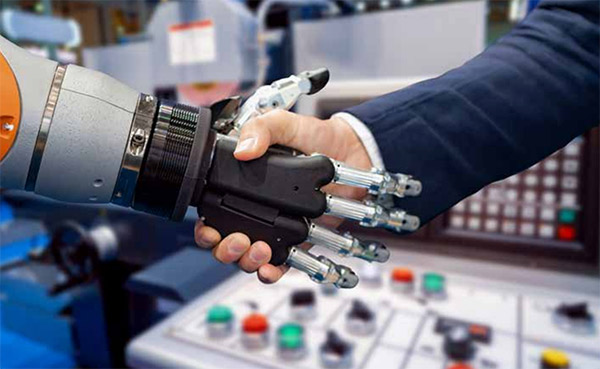The Small and Medium Enterprises (SMEs) act as a backbone of the Indian economy due to their significant contribution in the areas of productivity, trade, and employment. With the fourth industrial revolution focusing majorly on manufacturing process enhancement through the internet of things (IoT), cybersecurity systems, artificial intelligence (AI), and cloud computing, SMEs act as a key contributor to the Indian economy. As per the figures released by MSME Annual Report, SMEs have maintained an average growth rate of 9.13% with 31.83% contribution in the GVA (Gross Value Added) and 28.9% to GDP (Gross Domestic Product) in 2016-2017. At present, the total number of rural and urban SMEs in India is 63.38 million with 31% operating in the manufacturing sector.

Challenges for SMEs
Considering the above statistics, for a developing country like India, SMEs play a vital role in facilitating employment to millions of people. Yet, factors like adequate credit availability, storage issues, procurement, designing and packaging, global market access, skilled labor, low technology exposure, tax compliant processes, and proper infrastructure planning affect its capability to perform dynamically in global markets. However, taking into account the huge potential of the MSME sector, the government is facilitating the development and growth of this area to enhance its market competitiveness.
Substantial Value Addition by Digital Transformation
Digital transformation has a significant impact on the SME business and its ecosystem. It rebuilds business strategy by leveraging modern technologies like big data, cloud, mobile, machine learning, and artificial intelligence acting at the nexus of next-gen enterprise solutions. Indeed, digital transformation has already showcased a paramount shift in the conventional methods of manufacturing, storage, material handling, and delivery. Enterprise solution providers understand the need for digitization of SMEs to unlock its maximum potential.
Enterprise Resource Planning (ERP) in the making
Businesses usually have three top priorities, namely, winning new customers, reducing operational costs, and growing revenue consistently. However, major challenges like increased costing outpacing the revenue growth, fewer profit margins due to inefficiencies, and financing new investments can be quite daunting in the unprecedented business growth. ERP solutions can reduce the cost substantially resulting in 57% improved inventory turns, 20% faster order to shipment cycle time, 18% reduction in operational costs, and a 16% reduction in administrative costs. With modern ERP solutions, companies can grow 35% faster in terms of quality, usability, intelligence, and mobility.
ERP and Digital Transformation
ERP impacts digital transformation majorly. An ERP application is capable of bringing about radical changes through vibrant and customized process automation. ERP systems offer businesses digital benefits like mobile and cloud-based solutions to simplify key business functions like inventory management, accounting, resource management, and finance management. Additionally, ERP software can have add-on integrations with social media platforms to personalize business solution offerings.
ERP can lead to digital transformation in the following ways:
- Cloud-based ERP: Users can better utilize resources to their optimal productivity by engaging them in work remotely. Instead of restricting employees to be stationed at desks, companies can leverage cloud technology to access data and extract reports anytime, from anywhere. Mobile ERP solutions make this even easier.
- CRM Integration: ERP software simplifies and centralizes enterprise business processes while Customer Relationship Management (CRM) tools enhance sales and marketing efforts by capturing customer data and contact information. While CRM processes in the front-end, ERP takes care of the back-end. Seamless integration of the two provides companies with a 360-degree operational view of their business. Therefore, companies can enjoy the perks of detailed customer action views, improved efficiency, eliminated data duplication, employee collaboration, and faster sales cycles.
- Enhanced Scalability: Technological advancement is an inevitable process and in order to thrive in the competition, businesses should be scalable. If products and services offered by companies are restricted to future evolutions, they will eventually fade out in the competition. Some of the best ERP software is scalable and robust. Therefore, in the course of adopting newer technologies, companies can opt for periodic system updates instead of replacing the systems in its entirety.
Parting Thoughts
When we say digital transformation for SMEs, there are a number of factors that play a dominant role in shaping up the desirable output. Without having a proper business goal and sufficient technologies and tools to back it up, companies will continue to suffer in the long run. Indian economy is already undergoing a lot of turbulence, which can be stabilized by facilitating the growth of the Small and Medium-Sized Enterprises (SMEs). With digital transformation wave leading the Indian economy through SME role, ERP solutions leveraging modern technologies like big data, cloud, artificial intelligence, machine learning, and the internet of things (IoT) can impact businesses substantially. Small and Medium-Sized Enterprises (SMEs) should achieve digital transformation by continually investing in the latest software/ tools to gain a competitive advantage.




